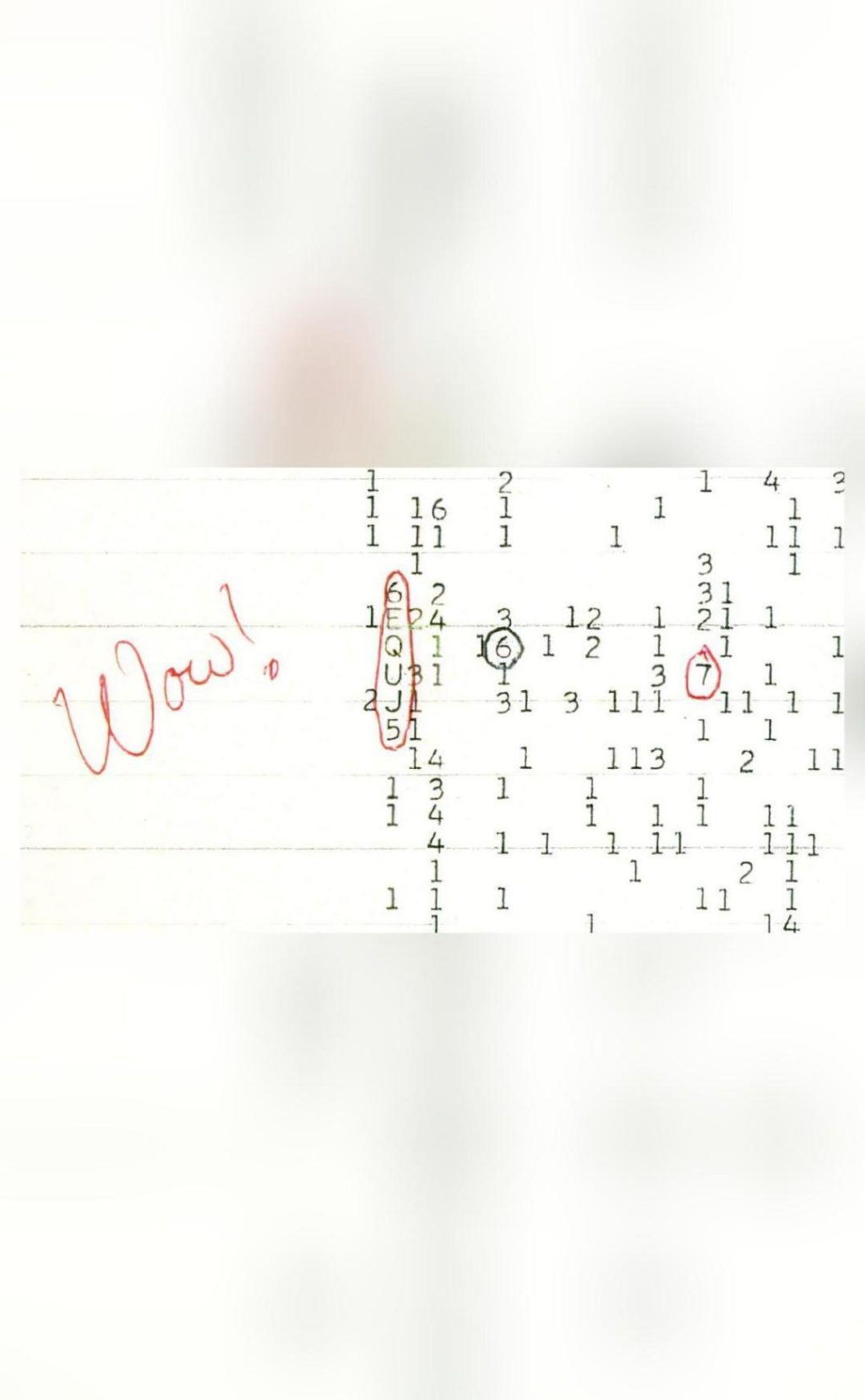
Mysterious ‘Wow!’ Signal from Deep Space was Much Stronger than First Thought: Study
One of the most enduring mysteries in the field of astrobiology is the “Wow!” signal, a strong, narrowband radio signal that was detected in 1977. Since its discovery, the signal has been the subject of much speculation and debate, with scientists struggling to explain its origins. Now, a new study has shed light on the signal’s strength and frequency, providing fresh insights into this enigmatic phenomenon.
The “Wow!” signal was first detected on August 15, 1977, by a radio telescope at Ohio State University’s Big Ear radio observatory. The signal was picked up at a frequency of 1420 MHz, and its peak intensity was estimated to be around 20 Janskys, a unit of measurement used to describe the intensity of radio signals. However, a new analysis has revealed that the signal’s peak intensity is actually much stronger than previously thought, at over 250 Janskys.
The revised estimate is based on a re-analysis of the original data using modern signal processing techniques. According to the study, the signal’s frequency has also been refined to 1420.726 MHz, which is incredibly precise given the limitations of the technology used at the time of the original detection.
The “Wow!” signal is named after the exclamation written in the margin of the printout by the researcher who first detected it, Jerry Ehman. The signal is remarkable not only for its strength but also for its narrow bandwidth, which is only about 10 kHz. This is extremely narrow for a signal of its intensity, making it a prime candidate for a transmission from an extraterrestrial civilization.
The signal has been the subject of much speculation over the years, with some scientists suggesting that it could be a transmission from an advanced alien civilization. However, others have proposed more mundane explanations, such as a natural phenomenon or a man-made signal.
Despite the many theories, the “Wow!” signal remains one of the most intriguing unsolved mysteries in astrobiology. The new analysis provides fresh evidence that the signal is a real phenomenon, and its revised intensity and frequency offer new clues for scientists to investigate.
The study’s findings are significant not only because they provide new insights into the signal’s properties but also because they highlight the importance of re-examining historical data using modern techniques. The “Wow!” signal is a prime example of how the application of new technology can lead to fresh discoveries and a deeper understanding of the universe.
The “Wow!” signal has been the subject of much public fascination over the years, with many people speculating about its origins and significance. The signal has also been the subject of several scientific studies, including a 2016 analysis that suggested that the signal could be a transmission from an advanced alien civilization.
Despite the many theories, the “Wow!” signal remains one of the most enduring mysteries in the field of astrobiology. Its strength and narrow bandwidth make it a prime candidate for a transmission from an extraterrestrial civilization, and its revised intensity and frequency offer new clues for scientists to investigate.
In conclusion, the “Wow!” signal is a fascinating and enigmatic phenomenon that continues to capture the imagination of scientists and the public alike. The new analysis provides fresh evidence that the signal is a real phenomenon, and its revised intensity and frequency offer new clues for scientists to investigate. As researchers continue to study the signal, it is possible that we may one day uncover the truth behind this mysterious transmission from deep space.
Source:
https://arxiv.org/abs/2508.10657






